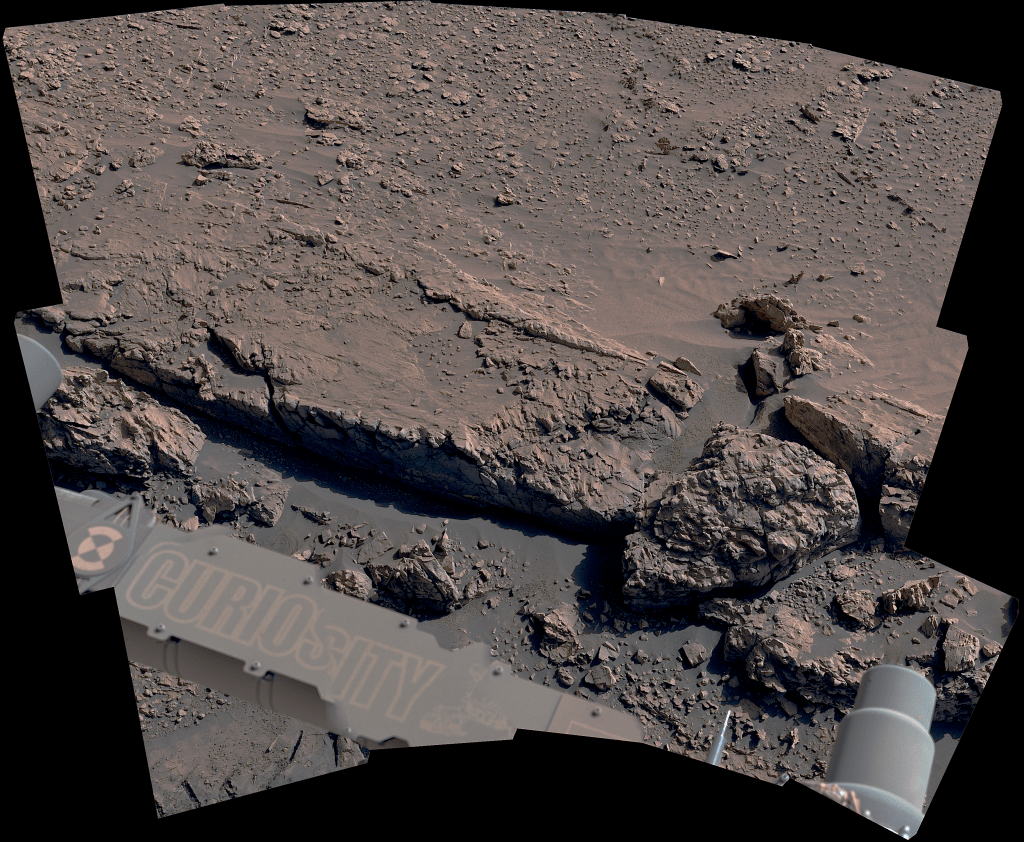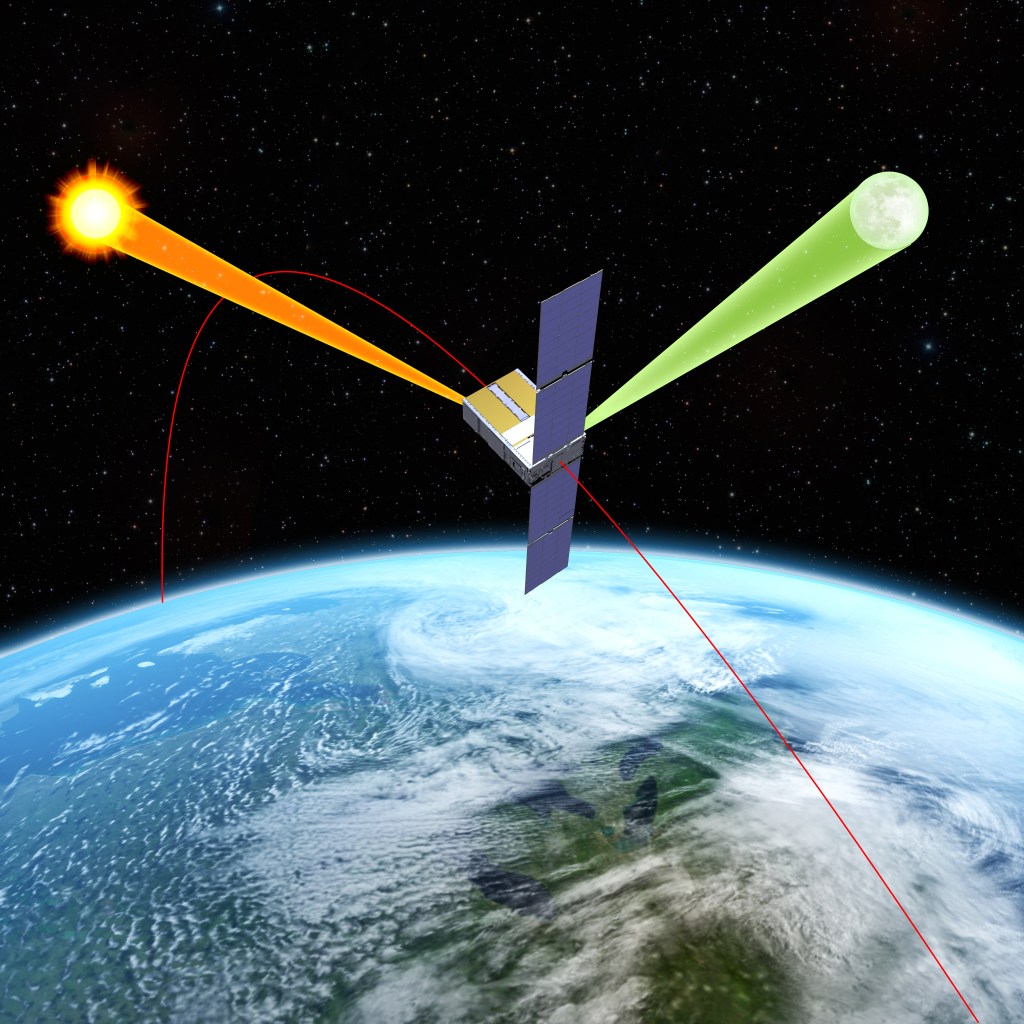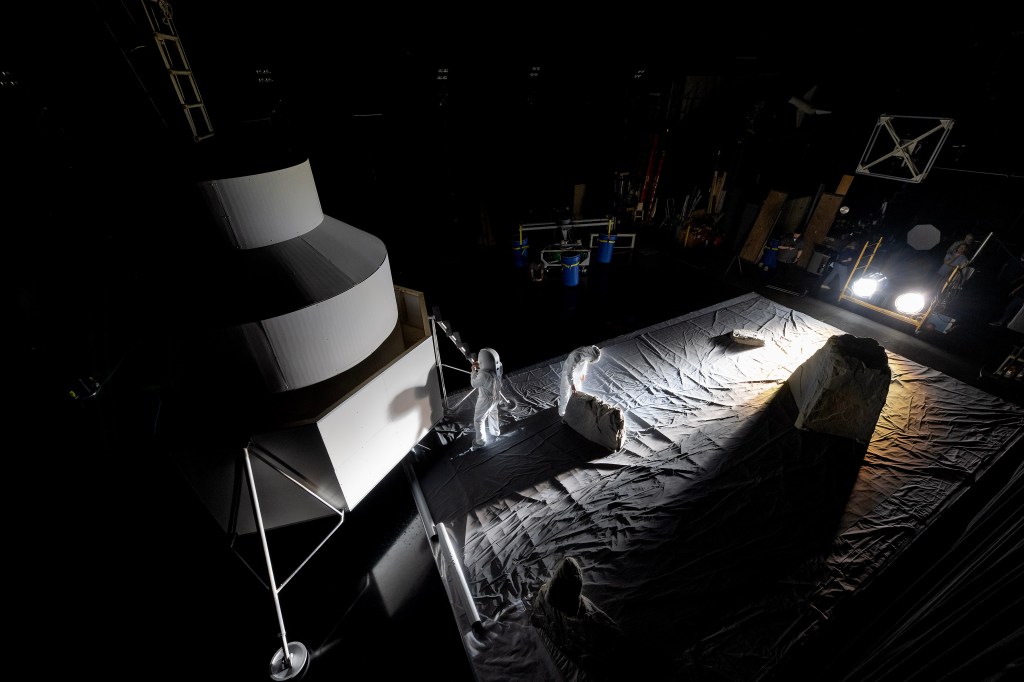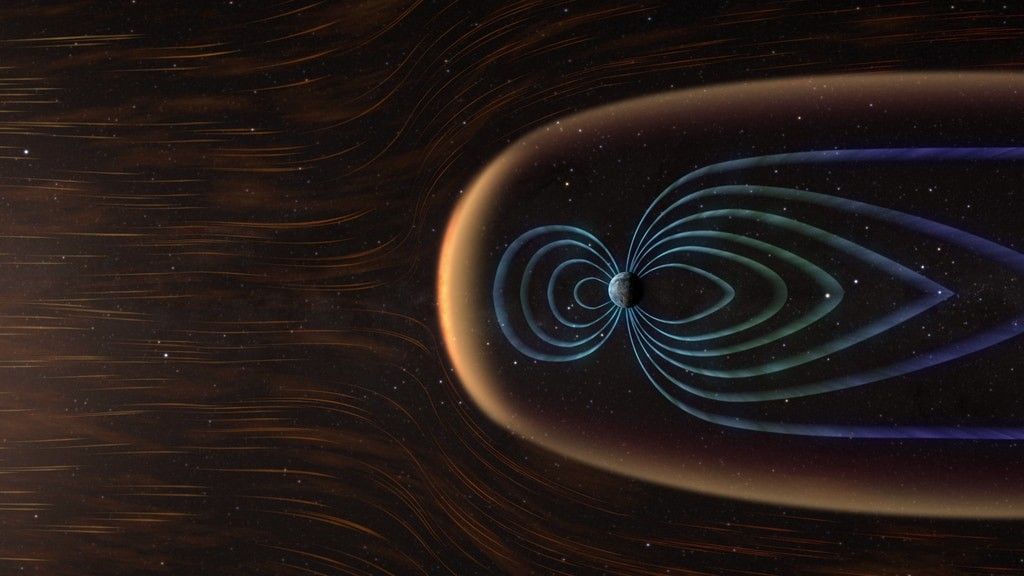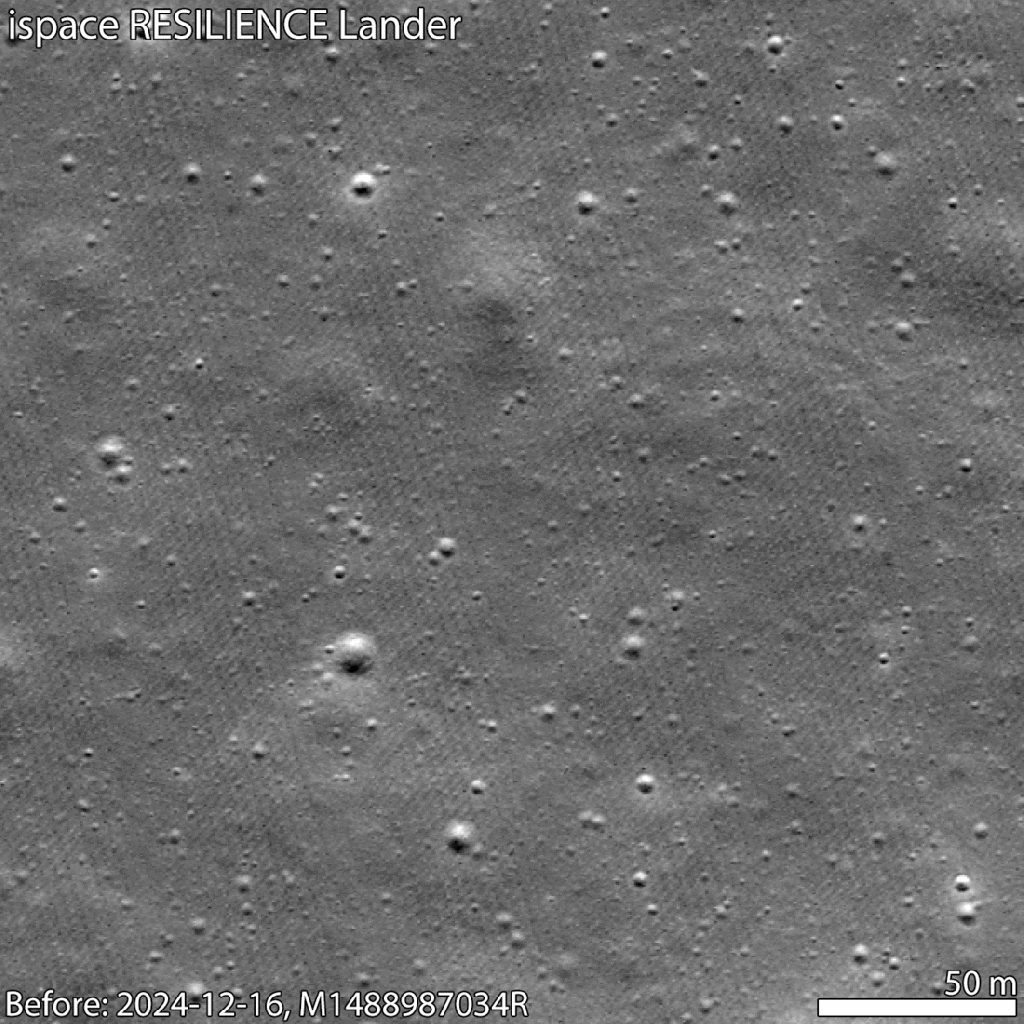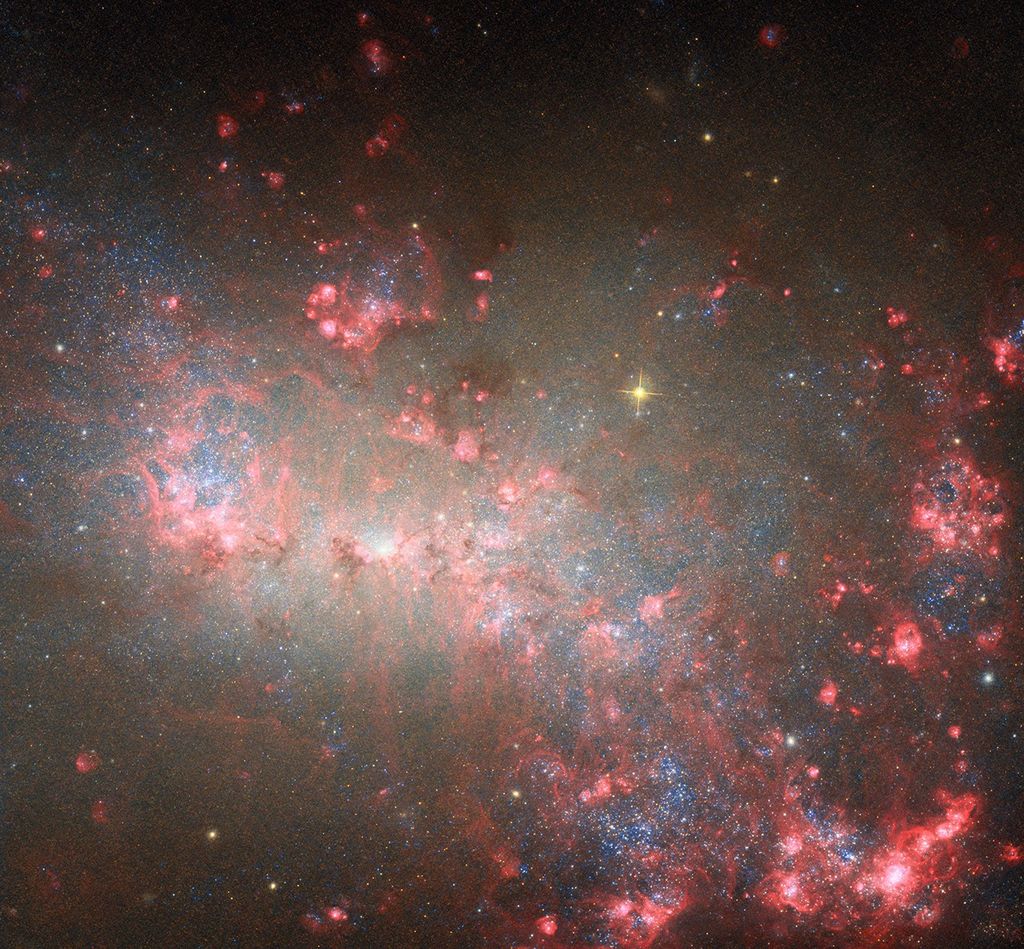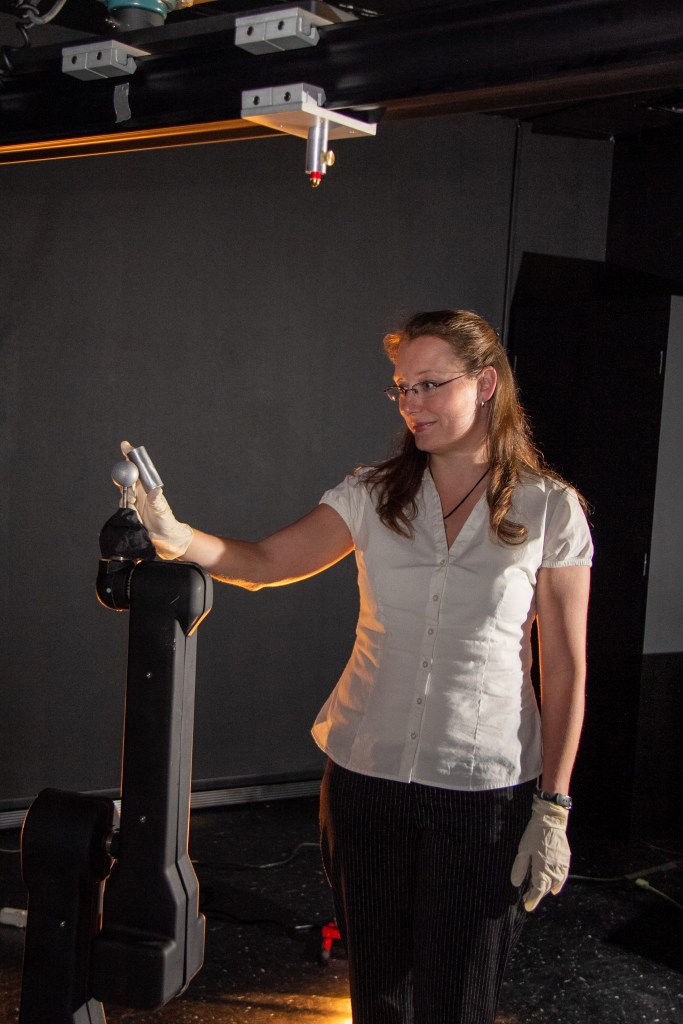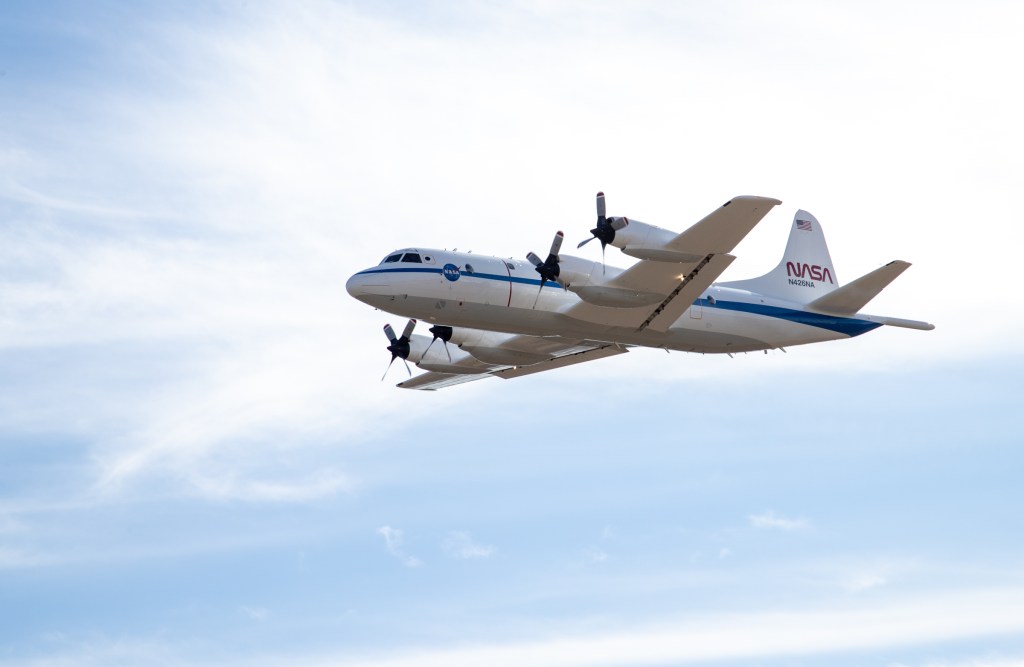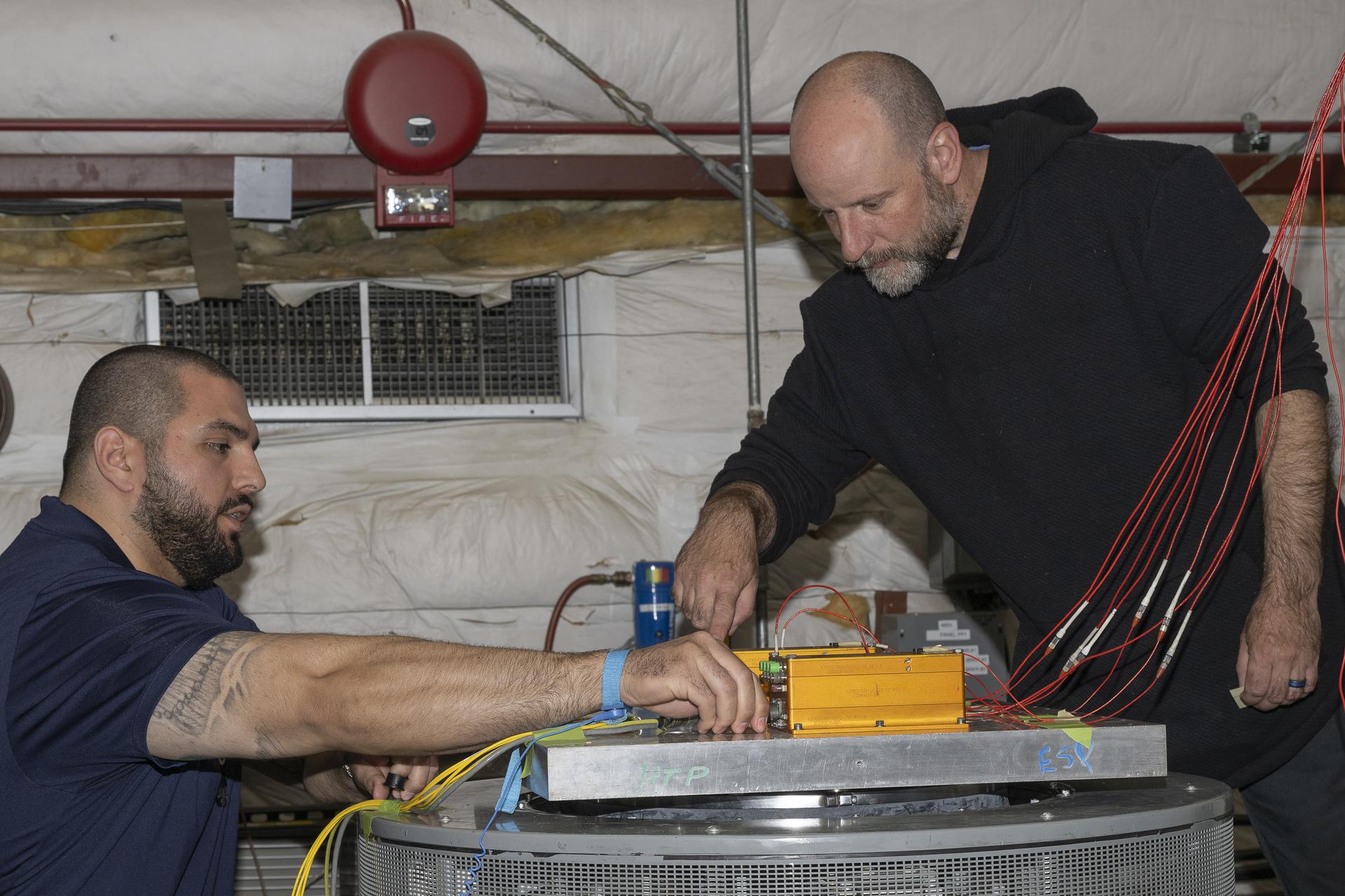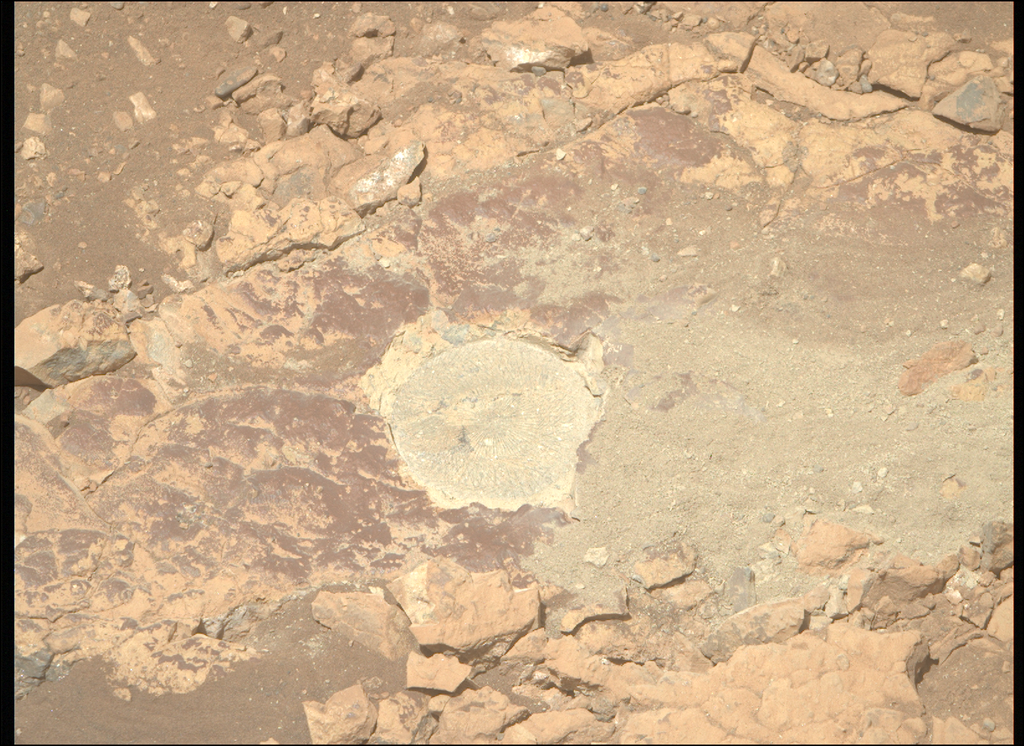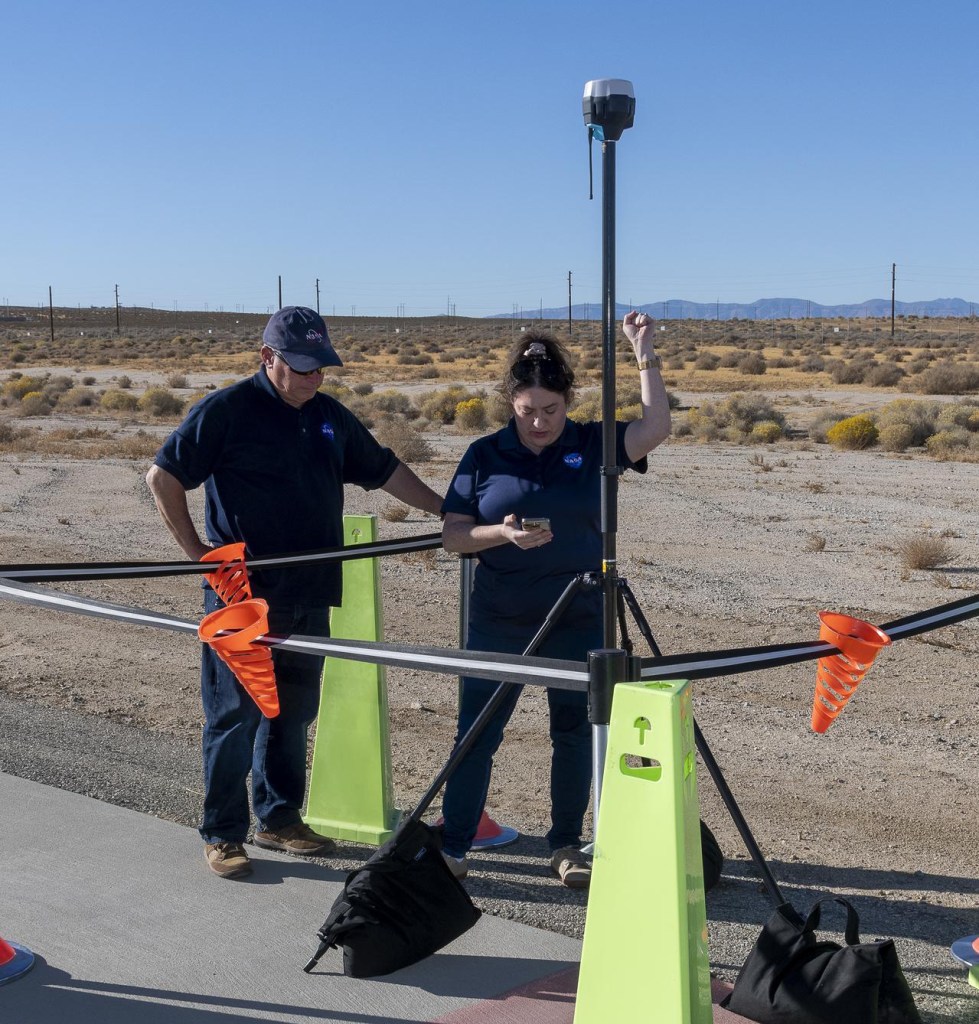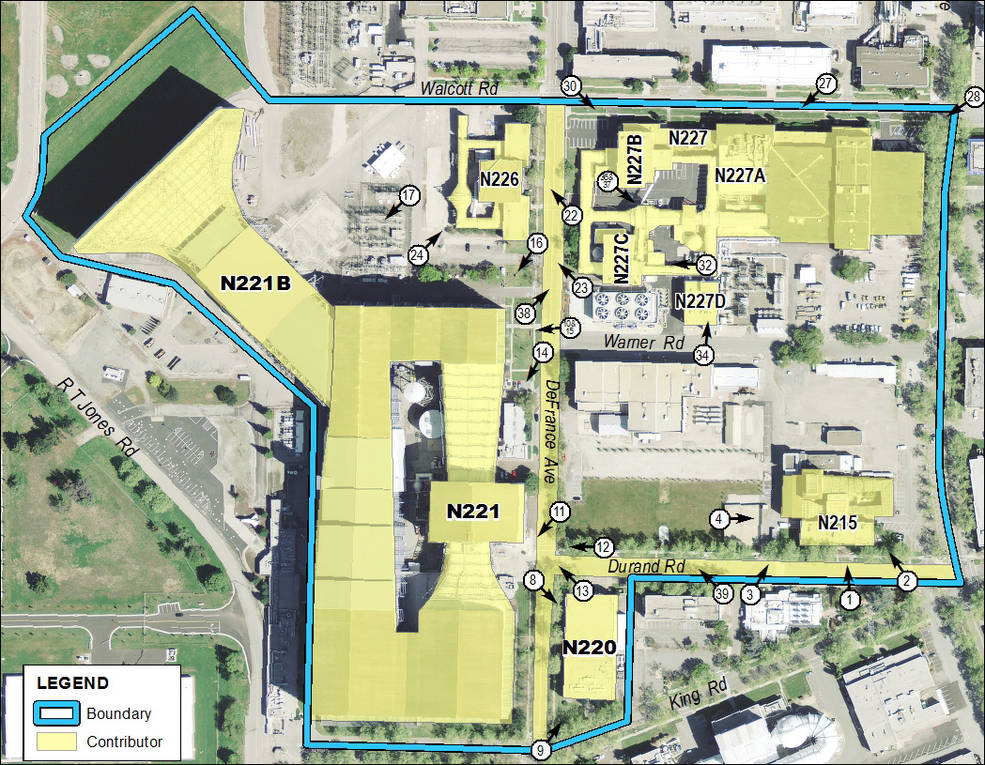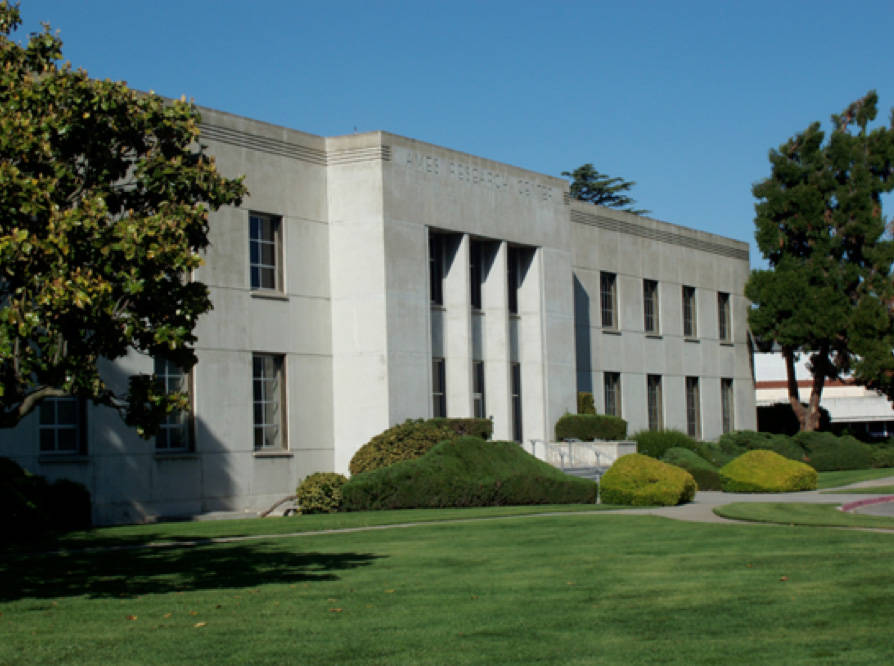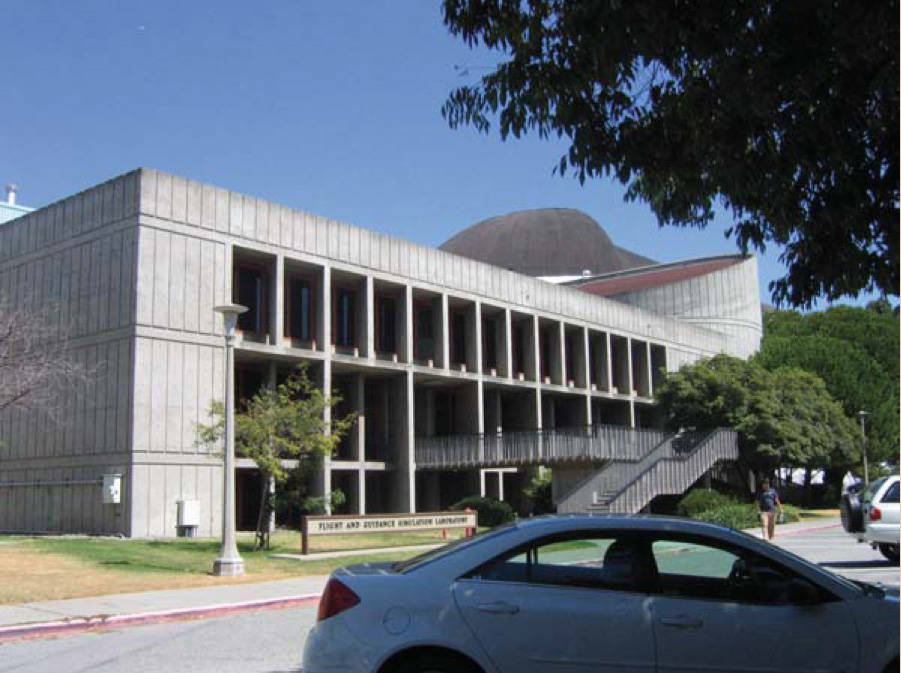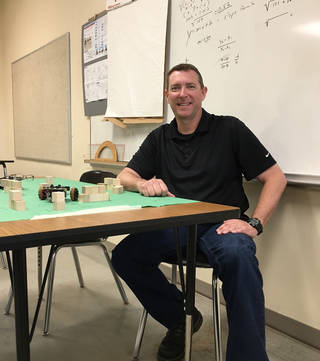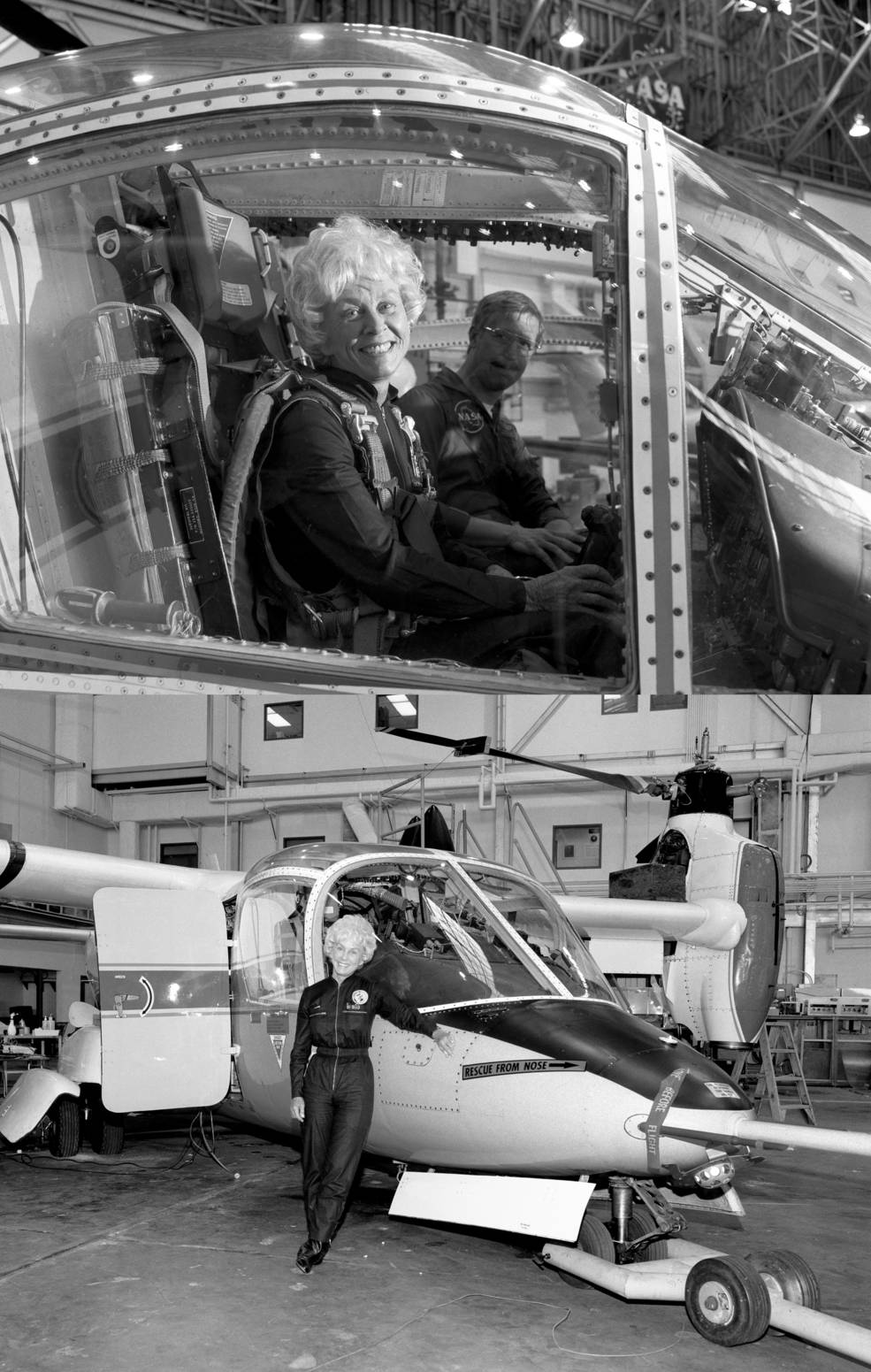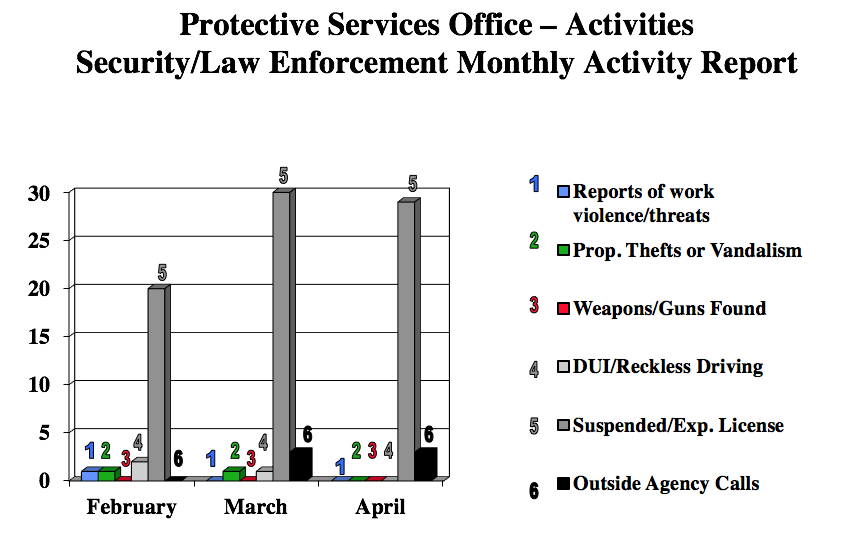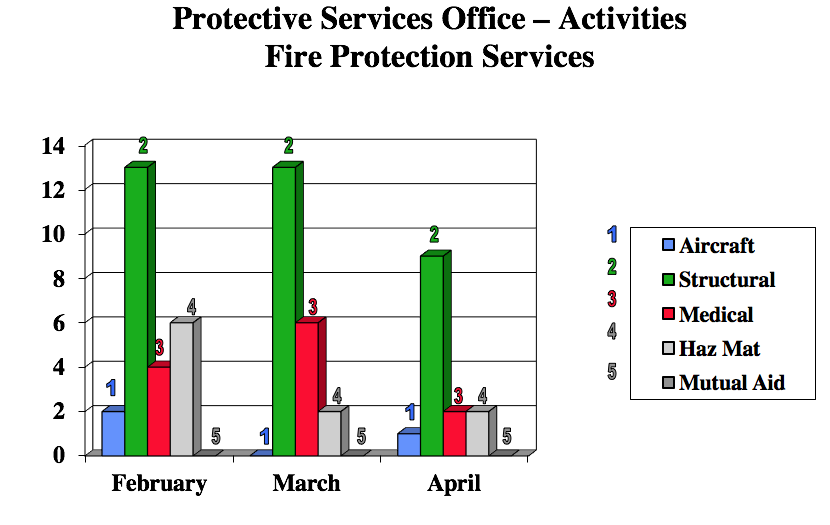May 2017 issue of Ames' newsletter, the Astrogram
Ames Earns 2017 Green California Leadership Award for Sustainability Base
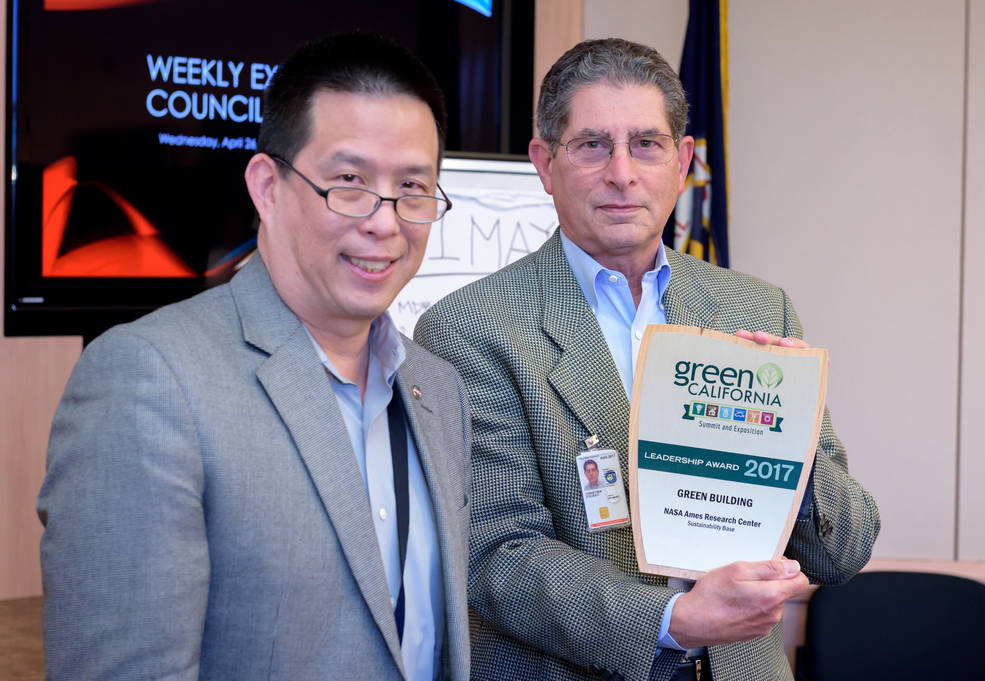
US Dept. of the Interior Designates New Wind Tunnel Historic District and Buildings at Ames
—Lists Them in the National Register of Historic Places
by Keith Venter and April Gage
The NASA Ames Wind Tunnel Historic District, Ames Administration Building, Arc Jet Complex and Flight and Guidance Simulation Laboratory are now listed in the National Register of Historic Places for their national significance in the areas of science, invention and engineering.
The Wind Tunnel Historic District, which contains one of the world’s greatest collections of wind tunnels and is the leading research facility for the aerospace industry, includes five contributing buildings:
- N215: 7-foot-by-10-foot Wind Tunnel Number 1 and Army Aeromechanics Lab
- N220: Technical Services Building
- N-221, N-221B: National Full-Scale Aerodynamics Complex, 40-foot-by-80-foot and 80-foot-by-120-foot Wind Tunnels
- N-226: 6-foot-by-6-foot Supersonic Wind Tunnel
- N-227, N-227A-D: Unitary Plan Wind Tunnel Complex (Also a National Historic Landmark and an International Historic Mechanical Engineering Landmark)
Constructed between 1940 and 1985, the district is deemed significant for being associated with major advancements in the nation’s aeronautical and space industries, including the development of aircraft, spacecraft and wind tunnel technology during the World War II and Cold War eras, the 20th-century expansion of commercial air travel, and for contributions to nationally and internationally important space science programs. The tunnels themselves represent significant engineering works that advanced the evolution of this type of facility. The Technical Services Building was included in the district for its function as a production facility for equipment such as wind tunnel models that were used to support testing and research.
The Administration Building (N200) made the list for being the administrative headquarters for research and development work managed by Smith J. DeFrance from 1940 to 1965. This work, conducted by the National Advisory Committee for Aeronautics (NACA) and NASA scientists and engineers, resulted in major contributions to the fields of aeronautics, aeronautical theory, aviation and space exploration.
The Arc Jet Complex (Buildings N234, N238 and SVS) was listed for advancing arc jet technology and for research and development of thermal protection systems for NASA spaceflight programs. The complex was instrumental in the development of every NASA planetary and space transportation program, including Mercury, Apollo, Space Shuttle, Viking, Pioneer Venus, Galileo, Mars Pathfinder, Stardust, National Aero-Space Plane, X-33, X-34, SHARP-B1 and B2, X-37 and Mars Exploration Rovers.
The Flight and Guidance Simulation Laboratory (Building N243) is significant for the major contributions to aeronautics, aeronautical theory, aviation and space flight that culminated from work conducted there. The facility has housed some of the most unique research, testing and training facilities for aircraft and spacecraft, including the Vertical Motion Simulator, which is the world’s largest and most sophisticated motion-based simulator. This simulator is especially noteworthy for providing research and astronaut training essential to the development and operation of the space shuttle.
The registration effort was managed by the Ames Historic Preservation Officer Keith Venter with primary support from AECOM architectural historians Patricia Ambacher, Trina Meiser, Madeline Bowen and Mark Bowen, and assistance from several people at Ames, from the managers of these facilities to the History Office archivist and historians.
For more information about historic properties at Ames, visit the Historic Preservation Office website at: https://historicproperties.arc.nasa.gov
Sources: United States Department of the Interior National Park Service. National Register of Historic Places Evaluation/Return Sheets for the NASA Ames Wind Tunnel Historic District, Ames Administration Building, Arc Jet Complex, and Flight And Guidance Simulation Laboratory. 2017.
All-Hands Held Includes Headquarter’s Broadcast of FY 2018 Budget and Q&A

Early Observance of Memorial Day Held to Remember Those Who Gave the Ultimate Sacrifice
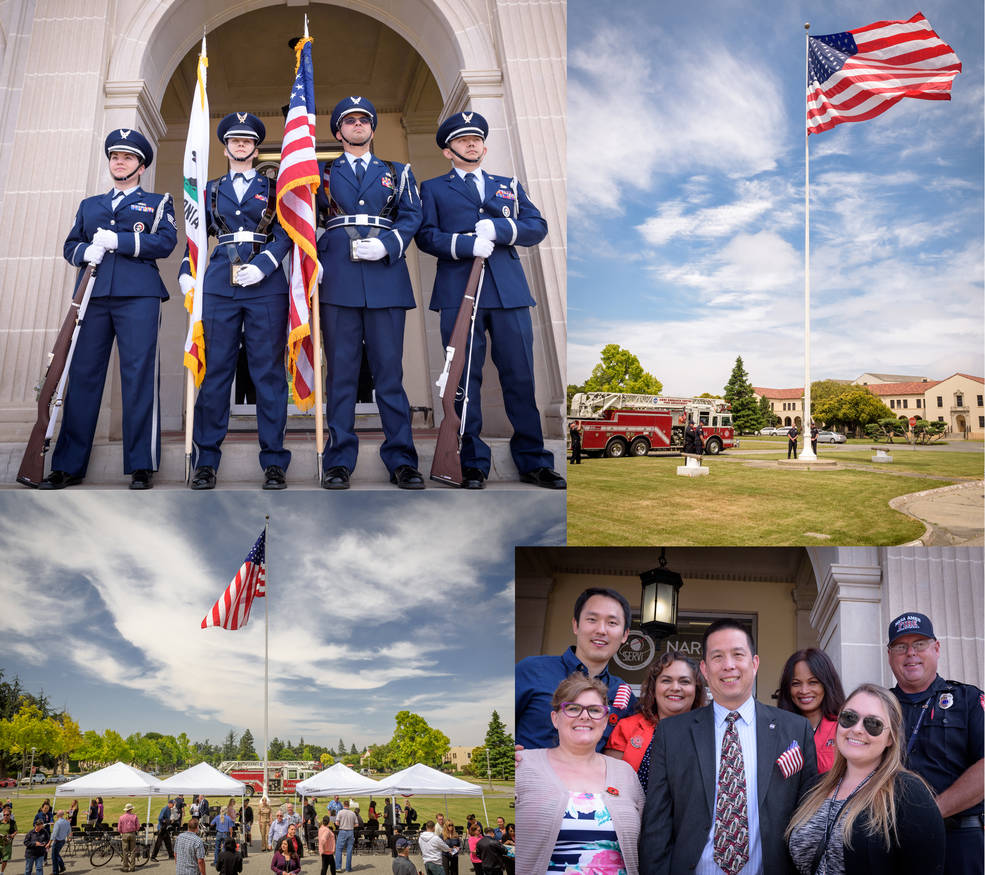
Cultural and Gender Awareness Discussed at Asian Pacific Heritage and Pride Month Lunch

Profiles in Education: You Keep Telling Us to Follow Our Dreams…
by Ruth Dasso Marlaire
Each year, the Fresno County court schools in California incarcerate approximately 220 students with another 100 students in its community school and group homes. Once in the juvenile justice system, students are required to attend one of its accredited high schools. According to recent data, nearly 80 percent of all county court students are enrolled for fewer than 90 calendar days, making classroom instruction dynamic and the classroom structure ever-changing.
About 18 years ago, Daniel J. Loewen left the traditional classroom to teach in the court schools at the Fresno County Superintendent of Schools. He now works as a teacher on special assignment in math and science, and strives to continually improve his teaching methods by developing hands-on science, technology, engineering and math lessons and projects for the classroom. To present a much bigger picture, one with infinite possibilities, he often uses a NASA-developed curriculum.
“NASA curriculum shows students a larger world and universe,” he said. “I encourage them to learn math and science, but I want them to pursue their dreams.”
Loewen is a NASA enthusiast. For years, he has participated in NASA’s Educator Professional Development program both at NASA Ames and Johnson Space Center in Houston, Texas. He enjoys teaching, but he also likes coaching people to challenge themselves. When he goes to NASA, he arrives with other educators. He encourages his colleagues to use NASA resources to better understand their subjects, enrich their teaching skills and consider a new perspective on routine topics.
“This knowledge translates to the students,” he said.
In addition to classroom training, he has regularly participated in field research sponsored by the NASA Ames Spaceward Bound program, and given research demonstrations at the Space Exploration Educators Conference (SEEC) at Space Center Houston, the visitor center of Johnson Space Center. In 2016, he shared what he had learned at Ames about wind tunnels and demonstrated how a wind tunnel can teach fluid mechanics. All educators are welcome to attend SEEC, but an added benefit is the multi-disciplinary NASA resources they receive to teach space curriculum.
“For the last five years, the Fresno county teachers and I have been going to Ames to expand our knowledge and resources,” he said. “Seeing where these NASA resources come from puts them in perspective.”
According to Loewen, NASA materials provide a great break from the traditional curriculum. The NASA challenges and curriculum give students a pathway to their dreams. The team work, communication skills and engineering processes show students that they are capable of so much more when they work hard and together.
“Providing an opportunity to dream big is key to the success of many programs within the juvenile justice systems,” he said.
Breaking the cycle of self-defeating behavior is important to the success of these students. To do that, he encourages them to see themselves in different roles, and to pursue their dreams. As it turns out, they expect him to do the same. At one point, Loewen shared his dream to become an astronaut. Since he always tells his students to follow their dreams, they felt compelled to challenge him about pursuing his own “dream.” Two students nominated him for the NASA educator astronaut program, and feeling obligated to follow his own sage advice, he wholeheartedly applied to the program. He never did receive that phone call, but he did become a member of the Network of Educator Astronaut Teachers (NEAT), a corps of prospective astronauts.
As a NEAT member, he has a new role to help other teachers use NASA education resources in their classrooms. For many years, NASA has provided invaluable resources to the county court educators to help them maintain enthusiasm and high-performance. As a result, the court schools now use these materials and resources to enhance instruction and help bring scientific relevance to mathematics and science subject matter.
“I know that I will not be the one walking on the moon, or Mars,” said Loewen. “However, the thought that I could be training future astronauts, engineers and trainers keeps me motivated to move forward. I have always told my students to follow their dreams.”
NASA Associate Chief Scientist Presents, “Innovation and Discovery, the Science Innovation Fund”
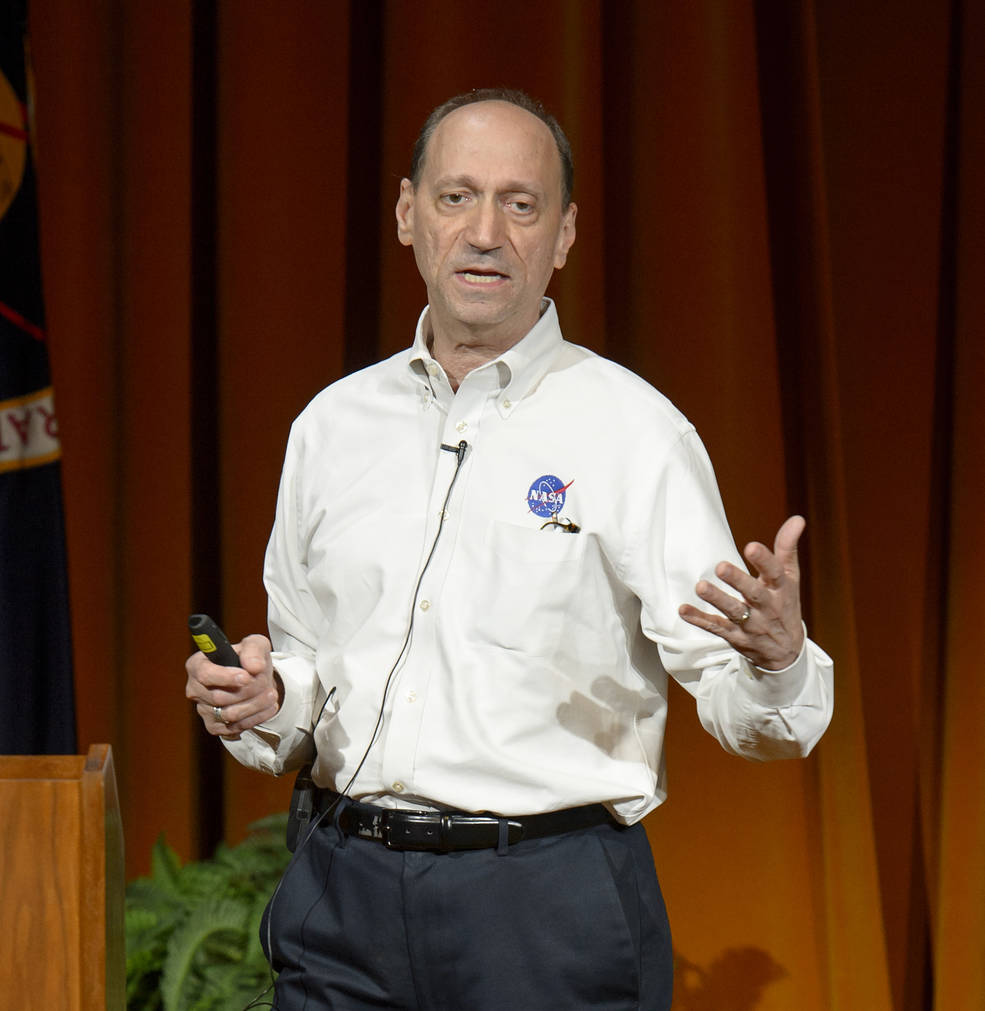
Pioneer in Supersonic Wind Tunnel Research and Exceptional Contributions to the History of Engineering Technology Celebrates 100th Birthday

NASA Astronaut Dr. Kathleen Rubins presents, "Science in Extreme Environments"
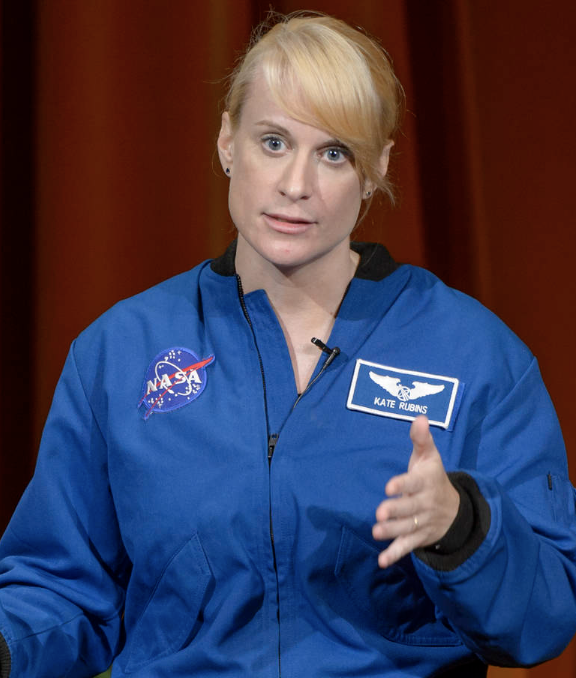
Ames Participates in Twenty-third Bay Area Bike to Work Day
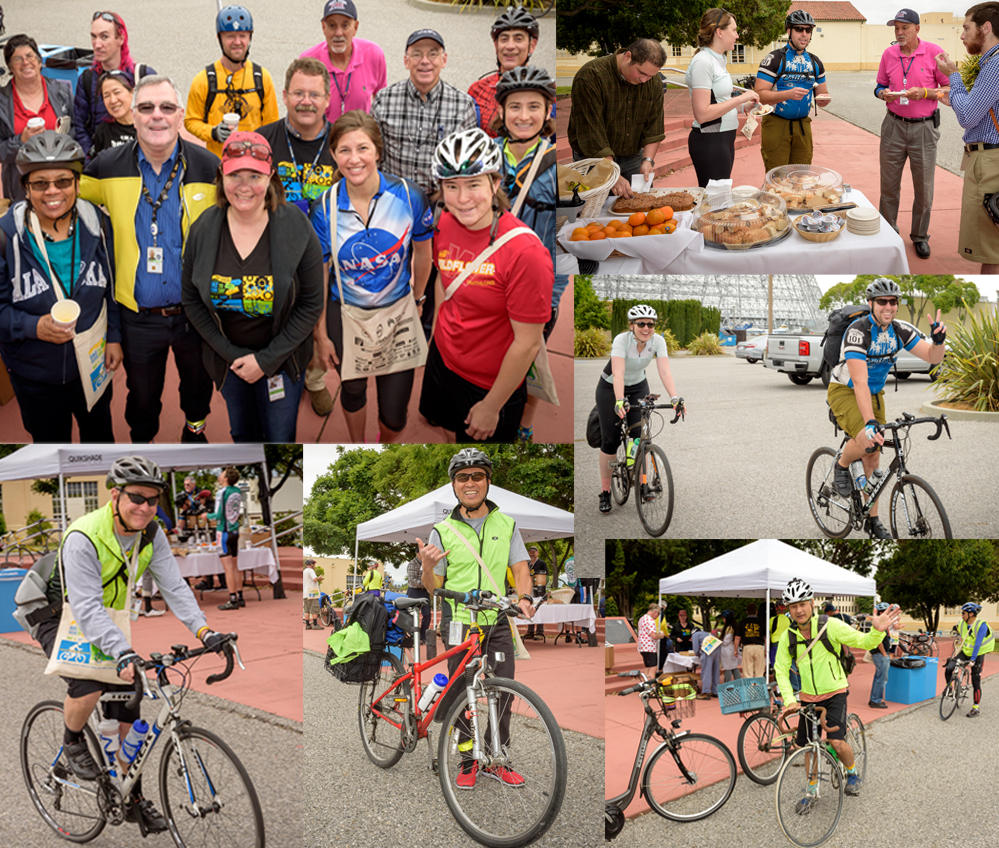
Employees Enjoyed the Beautiful Weather During the Spring Color-Fest Fun Run/Walk
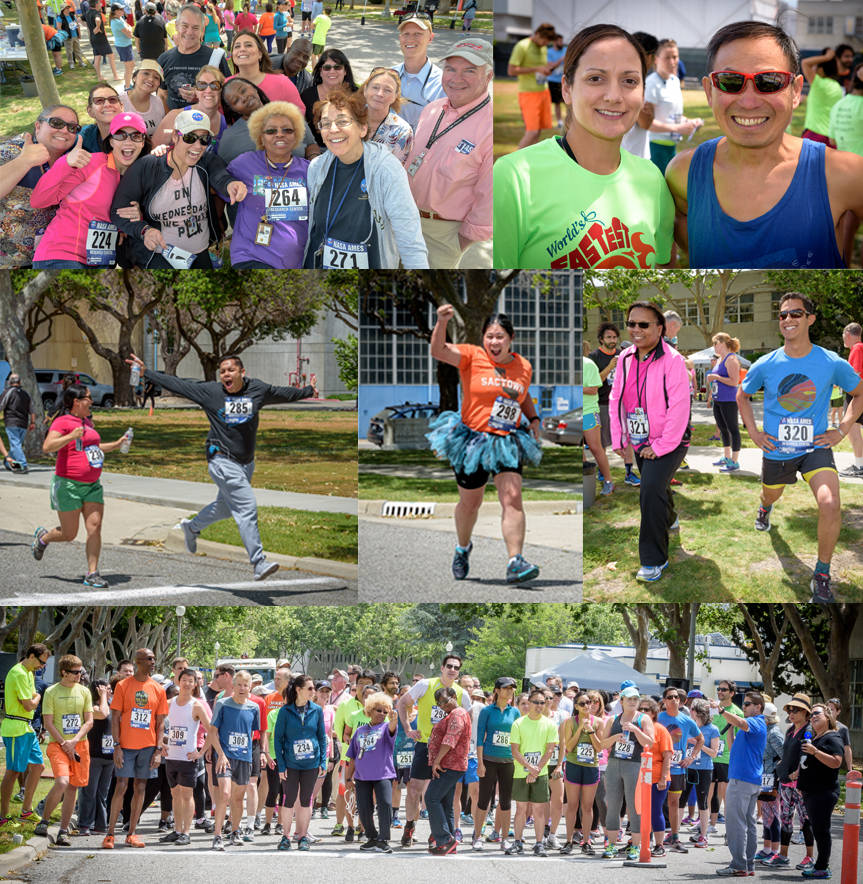
In Memoriam . . .
First Female XV-15 Pilot, Jean Kaye Tinsley, Passes Away
Jean Kaye Tinsley passed away on April 25, 2017. She was a major influence to many women in the field of aviation. She was born in San Francisco and graduated from Lowell High school, later earning an A.B. at the Language University of Santa Barbara and a M.A. in philology. Jean was a pioneer woman in the field of aviation achieving many firsts for her gender. She was a private pilot owning her own aircraft and a Whirly Girl #118, when female helicopter pilots were few. She was the first female in the world to earning a rating in constant speed prop gyro plane and also was the first female in the world to fly the XV-15 tiltrotor aircraft. She also spent many decades as a judge, overseeing helicopter competitions around the world.
Jean was an active member of many aviation organizations and sat on the boards of Whirly Girls, Helicopter Club of America and Bay Area Chapter of the 99’s. She married Dr. Clarence Tinsley, now deceased. Three children preceded her in death. She is survived by three children: Margaret Mulchay, William Tinsley (Joy) and Minot; 12 grand children; eight great- grand children; and one great-great-grandchild. There will be no funeral services as per Jean’s wishes. A Celebration of Life will be held at a later date. In lieu of flowers, please donate in Jean’s memory to The Whirly Girls Scholarship or the Bay City Chapter of the 99’s.

